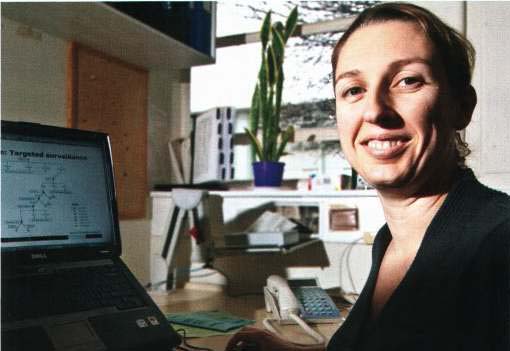modelling
Modelling and Simulation with Mathematical and Computational Sciences (MODSIM) is uniquely a multi-disciplinary gathering of modellers – from a range of modelling disciplines (statistics, mat
TRAVEL DETAILS
LOWCHOYS
When: July 2009
Location: Cairns, Queensland
Summary:
Dr Low Choy attended the International Modelling and Simulation Congress where she received useful feedback on her recent research into encoding expert judgements.
LOCATION
Charting pest rankings: a concert of challenges
Modelling pest risks
Spreading the collaboration
 Australia faces a significant challenge in order to minimise the entry, establish
Australia faces a significant challenge in order to minimise the entry, establish
Modelling the potential distribution of the Asian citrus psyllid in Australia under increasing temperatures
| Publication Type | Journal Article | |
| Year of Publication | 2008 | |
| Authors | Aurambout, J.; Finlay, K.; Luck, J.; Beattie, A. | |
| Journal Title | Ecological Modelling |
Hierarchical Bayesian Models for Emergency Plant Pest Management
| Publication Type | Presentation | |
| Year of Publication | 2008 | |
| Authors | Stanaway, M. | |
| Meeting Name | Queensland Primary Industries and Fisheries | |
| Meeting Start Date | July 2008 | |
| Meeting Location | Queensland |
Phosphine resistance modelling: the right genetics is crucial
| Publication Type | Presentation | |
| Year of Publication | 2009 | |
| Authors | Fulford, G. | |
| Meeting Name | CRCNPB 2009 Science Exchange | |
| Meeting Start Date | 22 - 24 September 2009 | |
| Meeting Location | Sunshine Coast |
Rapid response needed to rein in biosecurity breaks
Global Biosecurity Media Release: 1 December 2009
This project assessed the statistical and modelling tools available to evaluate surveillance systems and developed a surveillance system evaluation methodology to measure the effectiveness of early warning, area freedom and response surveillance. The project determined the sensitivity of surveillance systems to detection sensitivity, risk area analysis and uncertain epidemiological characteristics of spread and reproduction and optimise surveillance systems by using epidemiological knowledge.
What is the biosecurity problem?
Despite the biosecurity resources invested in surveillance programs, there are no accepted tools for evaluating the quality of surveillance with respect to the spatial epidemiology of invading pests. Surveillance implicitly underpins claims of plant health status for geographic areas. Our ability to manage eradication and containment programs, plant movement risks and early detection has been hampered by difficulties in interpreting what our surveillance is telling us. Quantitative surveillance analysis techniques based on epidemiological risk can provide a framework for measuring the value of data produced by surveillance systems and provide a methodology for assessing surveillance options.
The main outputs of this project were to:
- develop a methodology for negotiating area freedom related trade based on surveillance and risk assessment
- develop surveillance optimisation strategies for EPP early warning surveillance, and
- develop a spatially integrated analytical approach to surveillance evaluation to optimise EPP control options
Who are the end-users of this research?
This project resulted in a new PhD graduate trained in statistical techniques to guide and interpret surveillance emergency pest surveillance programs. The graduate was immediately employable within the plant biosecurity industry, increasing Australia's capability to undertake EPP surveillance.
STUDENT

Mr Mark Stanaway
Student CRC60034: Bayesian Surveillance Systems - PhD
mark.stanaway@deedi.qld.gov.au
Phone: 07 4044 1605
Fax: 07 4035 5474
Read More
PROJECT DETAILS
Complete
Supervisor
Dr Kerrie Mengersen
Supervising Institution
Queensland University of Technology
Term
December 2006 - November 2009

 “You cannot prove an area is free of a particul
“You cannot prove an area is free of a particul